#Why Node JS Is Better Than Python
Explore tagged Tumblr posts
Text
Data Visualization Techniques for Research Papers: A PhD Student’s Guide to Making Data Speak 📊📡
So, you’ve got mountains of data—numbers, statistics, relationships, and trends—but now comes the real challenge: how do you make your research understandable, compelling, and impactful?

Choosing the wrong visualization can distort findings, mislead readers, or worse—get your paper rejected! So, just dive into the best data visualization techniques for research papers and how you, as a PhD student, can use them effectively.
1. Why Data Visualization Matters in Research 📢
A well-designed visualization can:
✔ Simplify complex information – Because nobody wants to decipher raw numbers in a table.
✔ Enhance reader engagement – A compelling graph draws attention instantly.
✔ Highlight patterns and relationships – Trends and outliers pop out visually.
✔ Improve clarity for reviewers and audiences – Clear figures = stronger impact = better chances of acceptance!
🚀 Pro Tip: Journals love high-quality, well-labeled figures. If your visualizations are messy, unclear, or misleading, expect reviewer pushback.
2. Choosing the Right Chart for Your Data 📊
Different types of data require different types of visualizations. Here’s a quick guide to choosing the right chart based on your research data type.
A. Comparing Data? Use Bar or Column Charts 📊
If your research compares multiple categories (e.g., experimental vs. control groups, survey responses, etc.), bar charts work best.
✔ Vertical Bar Charts: Great for categorical data (e.g., “Number of Published Papers per Year”).
✔ Horizontal Bar Charts: Ideal when comparing long category names (e.g., “Funding Received by Research Institutions”).
🚀 Tool Tip: Use Seaborn, Matplotlib (Python), ggplot2 (R), or Excel to create polished bar charts.
B. Showing Trends Over Time? Use Line Charts 📈
For datasets where trends evolve over time (e.g., "Temperature Change Over Decades" or "Citation Growth of AI Research"), line charts provide a clear visual progression.
✔ Single-line charts: Track changes in one dataset.
✔ Multi-line charts: Compare trends across different variables.
🚀 Tool Tip: Matplotlib (Python) and ggplot2 (R) offer excellent support for customizable time-series visualizations.
C. Representing Parts of a Whole? Use Pie Charts (But Carefully) 🥧
Pie charts show proportions but should be used sparingly. If your data has more than 4-5 categories, use a bar chart instead—it’s much easier to read!
✔ Best for: Showing percentages in a dataset (e.g., "Distribution of Research Funding Sources").
✔ Avoid: Using pie charts when categories are too similar in size—they become hard to interpret.
🚀 Tool Tip: If you must use pie charts, D3.js (JavaScript) offers interactive, dynamic versions that work great for online research papers.
D. Finding Relationships in Data? Use Scatter Plots or Bubble Charts 🔄
Scatter plots are your best friend when showing correlations and relationships between two variables (e.g., “Impact of Sleep on Research Productivity”).
✔ Scatter Plots: Show correlations between two numeric variables.
✔ Bubble Charts: Add a third dimension by scaling the dots based on another variable (e.g., “GDP vs. Life Expectancy vs. Population Size”).
🚀 Tool Tip: Python's Seaborn library provides beautiful scatter plots with regression trend lines.
E. Visualizing Large-Scale Networks? Use Graphs & Network Diagrams 🌐
For research in social sciences, computer networks, genomics, or AI, network graphs provide insights into complex relationships.
✔ Nodes & Edges Graphs: Perfect for citation networks, neural networks, or gene interactions.
✔ Force-directed Graphs: Ideal for clustering related data points.
🚀 Tool Tip: Gephi, Cytoscape, and NetworkX (Python) are great tools for generating network graphs.
F. Displaying Hierarchical Data? Use Tree Maps or Sankey Diagrams 🌳
If your research involves nested structures (e.g., "Classification of Machine Learning Algorithms" or "Breakdown of Research Funding"), tree maps or Sankey diagrams offer a clear representation of hierarchical relationships.
✔ Tree Maps: Great for showing proportions within categories.
✔ Sankey Diagrams: Ideal for visualizing flow data (e.g., "Energy Transfer Between Ecosystems").
🚀 Tool Tip: Try D3.js (JavaScript) or Tableau for interactive tree maps and Sankey visualizations.
3. Best Practices for Data Visualization in Research Papers 📑
Now that you know which charts to use, let’s talk about how to format them for academic papers.
✅ 1. Label Everything Clearly
Your axes, titles, and legends should be self-explanatory—don't make readers guess what they’re looking at.
✅ 2. Use Color Intelligently
🚫 Bad: Neon rainbow colors that make your graph look like a unicorn exploded.
✅ Good: Use a consistent color scheme with high contrast for clarity.
🚀 Tool Tip: Use color palettes like ColorBrewer for research-friendly color schemes.
✅ 3. Keep It Simple & Avoid Chart Junk
Less is more. Avoid excessive gridlines, 3D effects, or unnecessary labels that clutter the visualization.
✅ 4. Use Statistical Annotations Where Needed
If you’re presenting significant findings, annotate your charts with p-values, regression lines, or confidence intervals for clarity.
🚀 Pro Tip: If you're new to coding, Tableau or Excel are the fastest ways to create polished graphs without programming.
Final Thoughts: Make Your Research Stand Out With Data Visualization 🚀
Strong data visualization doesn’t just make your research look pretty—it makes your findings more impactful. Choosing the right chart, formatting it correctly, and using the best tools can turn complex data into clear insights.
📌 Choose the right visualization for your data.
📌 Label and format your charts correctly.
📌 Use colors and statistical annotations wisely.
📌 Avoid unnecessary clutter—keep it simple!
🚀 Need expert help formatting your research visuals? Our Market Insight Solutions team can assist with professional data visualization, statistical analysis, and thesis formatting to ensure your research stands out.
💡 We will make your research visually compelling and publication-ready! 💡
1 note
·
View note
Text
shorter version of a post I've been thinking about making but like: I always used to think of the web platform, particularly typescript and PWAs, as beholden to their history and thus hacky and bad (and they totally are)... but that was such a strong belief partially because of the corollary belief that there were competing platforms with similar utility without the baggage. surely, I thought, other languages' type systems would be less tacked on and inconsistent, while being equally expressive. but I was looking at other languages and ran into a blog by someone who obviously knows many but prefers ts, which seemed wild given that assumption, but along with the mentioned research into other languages I'm realizing that my imaginary comparison point might not exist: there may be ways in which ts's type system is uniquely expressive; java got lambdas not so long ago, C++ is getting await soontm, etc. and the js engines really are works of art; python would be jealous. sure, people use these web technologies because they're what gets you on devices, but that doesn't mean they're inherently worse versions of other options.
which of course brings up a possible reason why, which is that the limitations they're developed under result both in stupid stuff but also brilliant stuff. typescript has to be so expressive because it was forced to include the patterns people were using before its existence; someone creating a reasonable language ought not to have bothered solving some problems it solves. v8 and jsc and spidermonkey are so unreasonably good at making interpreted code fast because they had to. the world's pool of developer talent for doing the weird bullshit the web platform runs on probably work mostly on making the web platform exist; given that premise, why would there be a better version just lying around? this isn't a full efficient-markets hypothesis thing but there's something to it. if a scripting language was better enough that I should obviously and unequivocally be using it rather than node, I would already know this fact and I would be using it.
of course, the last bit of this is that, again, dart/flutter really does look at a glance like "typescript/react/react-native but without the baggage," and I'm looking forward to finding out what makes it not better.
0 notes
Text
Top 7 Benefits of Hiring Dedicated Web Developers?

Enterprises across the globe are increasingly making the most of digitization. No wonder they need to leverage mobile apps and intricately designed aesthetically appealing websites & web applications.
A changing trend indicates that businesses prefer to outsource their mobile app and website development needs over hiring an in-house team of developers or managing it all by themselves. And why so?
Well, that?s what this post is about. If you are reading this post, the chances are that you too are looking to hire dedicated software developers. If yes, you must pat your back for this decision as there are myriads of benefits of hiring developers on a dedicated basis.
Let?s dive right in and take a look at those benefits.
Benefit #1- Access to skilled developer
Choosing to hire dedicated developers offers access to a team of highly skilled developers and designers. Whether you are looking to hire Dot Net Nuke, Python, Laravel, or Node JS developers, approaching a software development company to hire developers on a dedicated basis makes more sense rather than hiring freelancers.
That?s because freelancers are mostly niche-oriented and secondly they do not have as many resources as a software development company does.
Benefit #2- It is highly economical
More often than not, hiring a team of in-house developers turns out to be costlier than outsourcing your project, and needless to say it consumes your energy and a considerable amount of time to manage things when the project gets started.
Hiring a reputable software development company for web application or mobile development saves you a lot of time and money as you not only get access to a team of developers and designers but also have a dedicated project manager. You are kept updated about every vital detail of project development.
Benefit #3- Timely project completion
Next up! Web or mobile application development faces numerous roadblocks and when you do not have seasoned or professional developers, these roadblocks can cost you quite dearly.
Enterprises prefer hiring developers on a dedicated basis as these professionals dedicatedly work on their projects. This results in better productivity and outcomes. Project management becomes a cinch and more effective than it would be with an in-house team or freelancers.
Your project manager will provide you with daily and weekly reports and you can also interact with the developer for efficient project management.
Benefit #4- Client-centric solutions
Every project is unique and professional developers hired on a dedicated basis know the art of offering customized solutions. One size doesn?t fit all and this is where freelancers often go wrong. The whole strategy is created keeping client satisfaction in mind and as a stakeholder that?s what you expect when you invest your money and trust.
Benefit #5- Scalable solutions
Being a far-sighted entrepreneur you want to be future-ready. Hiring web developers and designers on a dedicated basis ensures that your business is powered with scalable solutions.
Scalability allows you to expand your wings as your needs change in the future. The IT landscape is quite dynamic and hence you need the assistance of pro developers who know what works and what doesn?t.
Benefit #6- Prompt response and technical assistance
The need of scaling up or down according to the current situation may arise at any time and when it is about handling a mission-critical situation, you need a prompt response from the support team.
Reputed software development companies have an in-house team of technical support professionals that is at your disposal 24?7 and if you need their help, they are just a call or click away.
The support team ensures that there is almost zero downtime so that your business does?t take a hit during crucial business hours. Business continuity tops the priority list of all stakeholders and you are not an exception either.
Benefit #7- Quick turnaround time
Increase productivity and curb vulnerabilities in a time-efficient manner. Also, your website's security cannot be compromised at any stage. When you hire a professional team of IT professionals, you can rest assured that your web application or mobile app is safe from unauthorized access and malicious attacks.
Hire Dedicated Developers for Your Ambitious Project
It can be safely concluded that having a team of dedicated developers by your side is a cost-effective and productive way that ensures 100 per cent ROI.
If you are working on your next ambitious project and looking to hire dedicated developers, feel free to connect with Citta Solutions. software development experts and they would be more than happy to get you an obligation-free quote right away.
0 notes
Text
What is the Best Technology for Your Project - Python vs Nodejs?
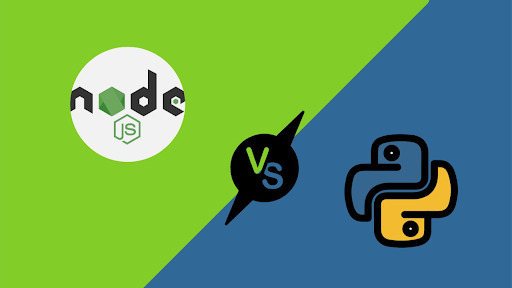
Both Node.js and Python are great programming languages, with strong communities behind them. If you're looking for an easy-to-use language with a large community, then use python. If you prefer to learn javascript, which is the technology behind node.js, then use node.js.
#Node vs Python Backend#Nodejs or Python#Nodejs vs Python#Nodejs vs Python for Web Development#Nodejs vs Python Performance#Why Node JS Is Better Than Python
0 notes
Text
From Meh To Great: My Experience with NodeJS Browser Testing since 2015
A lot can change in a few years. Just look at the state of affairs in the JavaScript (JS) test automation space.
In 2015, if you asked me my opinion on JS and browser testing, I would've said "Avoid using JS altogether as much as possible, but if you need to use JS use Protractor."
Now, my position has completely flipped: "WebdriverIO is the best choice overall for browser (and mobile app) UI test automation, and I would definitely encourage JS-based tools over Java-based tools."
(If you're thinking "Where do you think JS tools for test automation be in 2026?" my answer is "No friggin idea".)
I think it might be helpful to think through why this position has flipped, since it might be helpful to understand the current landscape of JS-based testing tools but also for browser test automation tools more generally. Not just that, but JS-based tools are now applicable beyond purely JS projects and organizations, with Playwright going cross-language after beginning in JS. Test tools with JS aren't just surviving, but also thriving.
First, back in '15, Angular was de rigeur in the front-end JS framework world. React was only coming out, and tools like VueJS and Svelte were still many years away. Angular had a lot of mindshare and a lot of usage, so naturally a test framework that came along with it would get a lot of attention as well. And the Angular project (correctly) treated browser testing as a first-class citizen in its ecosystem, putting appropriate resources behind getting Protractor right. Protractor itself had at least one full-time developer at Google dedicated to it and a lively GitHub with issues and bugs being opened a closed.
As well, JS was a dramatically different language then. Promises were being incorporated into NodeJS itself, meaning asynchronicity had a better API to work with than function callbacks. ES6 classes were a few years away, and even npm scripts were not widely used in 2015. All of these features of NodeJS (or lack thereof) also helped buoy Protractor's interest from the development and testing communities. Since Protractor used WebdriverJS, the JS language bindings provided by the Selenium project, and WebdriverJS made use of promises, Protractor code was as idiomatic and "standard" as possible for NodeJS around 2015.
Still, despite all of the above, JS was an asynchronous language. Since virtually all browser-based automated tests were designed to be run synchronously, learning promise syntax and semantics were an extra and nontrivial step in learning to write good Protractor tests. As well, writing page objects was, well, tricky in a language that didn't have the concept of class-based objects. There was a lot of overhead in writing good tests in Protractor compared to Java or Python. Similar projects for writing browser-tests in NodeJS ranged from not quite mature enough (WebdriverIO) to almost unusable (NightwatchJS) mostly because these projects were also relatively young. Add in the fact that Protractor was Angular-specific and Node tooling wasn't as fully developed as compared to Java (remember Grunt for running things?), choosing Java over Protractor (for example) was a somewhat easy choice.
Let's roll forward to 2021.
The world has changed, and with it so has server-side JS. Now class-based object-oriented programming is possible in JS, and defining and running scripts from a package.json is standard fare. Server-side JavaScript, both the language and tooling around it, has matured quite quickly. Now writing scalable codebases of mostly synchronous code (including test projects) that are maintainable is completely possible in NodeJS. Along with this, the maturity of tools such as WebdriverIO and NightwatchJS has grown too. There is even a new category of tools that do no use Selenium in any way (using the client-side JS bindings or the W3C protocol) including Cypress, Playwright and TestCafe. There is a complete buffet of choices for anyone who wants to write browser-based test automation in JS these days.
And in my opinion, the best of these tools is WebdriverIO. The main reasons for choosing this are
its has a robust service/plugin ecosystem, which allows teams to pick and choose what functionality they need,
its active community, where questions can be answers, features discussed and general help with the tool is encouraged, and
its well-thought-out API and tooling design allows for different tests and structures to reuse the same code.
Overall WebdriverIO isn't just the best tool (in my opinion) in the NodeJS world, it might be the best choice overall for teams starting with browser (or mobile!) test automation.
Meanwhile, Protractor is reaching the end of its life. For some, this comes as no surprise. Protractor bugs and issues keep steadily increasing for a few years, while contributors and dedicated engineers from Google kept decreasing. Using WebdriverJS and not encapsulating asynchronicity from end users turned out to be a mistake, while Angular-specific features eventually were removed or lost value for test developers. Finally, the Angular project announced that Protractor will not be maintained after the release of Angular 15. The go-to JS tool of my halcyon days of test development will be no more.
I'm reminded of the quote that "The only constant is change". It looks like this definitely applies to the NodeJS test tool landscape.
1 note
·
View note
Text
Node.js: A Future in 2022?
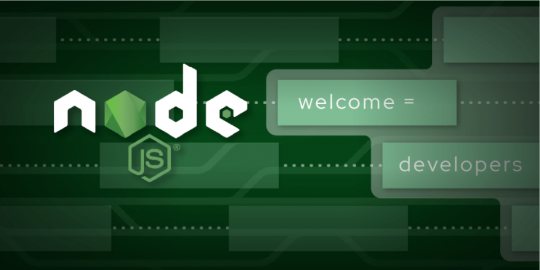
Node JS is a JavaScript runtime environment. It is one of the most popular web development platforms for writing simple and fast network applications in JavaScript. Node JS was initially developed by Ryan Dahl, who was working as a contractor for Linux creator, Joyent Inc., in order to implement server-side support for Google’s V8 JavaScript engine. Node JS is built on top of the V8 engine and it inherits a lot of its features. As such, developers can write code using Node JS without having any knowledge of V8 or even JavaScript. Since then, there have been several upgrades and releases from nodejs as well as several new challengers that have emerged to take it on more effectively. Let us look at some facts about this platform and how you can use it sooner rather than later if you are looking to get into the field of web programming soon.
Node JS - An Introduction to the Basics
Node JS is an open-source JavaScript runtime environment that powers a wide range of applications. It is written in JavaScript and Modernizr can be used to determine whether a browser supports it or not. It is based on Google’s V8 JavaScript engine. You can learn more about Node JS from our Node JS tutorial for beginners. There are a few important things that you should know about Node JS as a beginner. One of them is that, unlike other JavaScript frameworks and engines, Node JS does not have its own built-in database system or ORM. Instead, developers use the CouchDB database or the NoSQL solution, MongoDB. Another important thing that you should know about Node JS is that it is written in JavaScript. This means that it is not designed to be used with other programming languages like Python, Ruby, or Java. However, there are a few JavaScript libraries that you can use with Node JS.
Installation of Node JS
Node JS comes as a package and it is not necessary to install it manually. You can get it along with Node JS on the Node JS website. On your computer, you can find Node JS along with the necessary instructions to install it. All you need to do is follow the instructions to download and run the setup file. You can do it either on a Mac or a Windows computer.
Node JS – A Complete Guide for Beginners
If you are a beginner and want to learn about Node JS, then you have come to the right place. In this Node JS tutorial for beginners, we will explain everything about this platform and how you can start using it immediately. First of all, you will get an idea about the basic concepts of Node JS and why it is used in web development. The main aim of Node JS is to create a server-side environment for JavaScript. Next, you will learn about the Node JS installation process. You will also come to know how to install Node JS on your computer. After that, you will learn the various Node JS commands and how to write simple applications with them.
Node JS – The Future?
JavaScript is the most popular programming language in the world and the biggest reason for this is the emergence of Node JS. It was first launched in 2009 and since then, it has gained immense popularity among developers. Node JS is not confined to one system or browser, and thus, it is used to power various web applications, mobile apps, and other things. Now, Node.js Developers are coming up with newer and better ways to make use of this open-source JavaScript platform. For example, there are new ways to develop IoT applications, app development for blockchain, and many more. You can read more about the future of Node JS from our Node JS tutorial for beginners.
You Should Try It!
At the end of the day, it is all about giving yourself the best opportunity to learn new things and explore new avenues. If you are looking to get into the field of programming, then you should definitely give it a try. Node JS is one of the most popular platforms for web development and it can be used to create a variety of internet-based applications, games, and much more. There are several learning resources available for Node JS that can help you get started with this platform. You can even enroll in online Node JS courses or tutorials if you are looking to learn more about this platform.
0 notes
Text
What is PHP? The PHP Programming Language Meaning Explained
PHP is an open-source server-side scripting language that many devs use for web development. It is also a general-purpose language that you can use to make lots of projects, including Graphical User Interfaces (GUIs).

In this article, I will help you explore the world of PHP so you can learn how it works and its basic features. By the end, you will be able to write your first Hello World program in PHP.
What Does PHP Mean?
The abbreviation PHP initially stood for Personal Homepage. But now it is a recursive acronym for Hypertext Preprocessor. (It's recursive in the sense that the first word itself is an abbreviation, so the full meaning doesn't follow the abbreviation.)
The first version of PHP was launched 26 years ago. Now it's on version 8, released in November 2020, but version 7 remains the most widely used. PHP runs on the Zend engine, which is the most popular implementation. There are some other implementations as well, like parrot, HPVM (Hip Hop Virtual Machine), and Hip Hop, created by Facebook.
PHP is mostly used for making web servers. It runs on the browser and is also capable of running in the command line. So, if you don't feel like showing your code output in the browser, you can show it in the terminal.
Advantages of PHP
PHP has some advantages that have made it so popular, and it's been the go-to language for web servers for more than 15 years now. Here are some of PHP's benefits:
Cross-Platform: PHP is platform-independent. You don't have to have a particular OS to use it because it runs on every platform, whether it's Mac, Windows, or Linux.
Open Source: PHP is open source. The original code is made available to everyone who wants to build upon it. This is one of the reasons why one of its frameworks, Laravel, is so popular.
Easy to learn: PHP is not hard to learn for absolute beginners. You can pick it up pretty if you already have programming knowledge.
PHP syncs with all Databases: You can easily connect PHP to all Databases, relational and non-relational. So it can connect in no time to MySQL, Postgress, MongoDB, or any other database.
Supportive Community: PHP has a very supportive online community. The official documentation provides guides on how to use the features and you can easily get your problem fixed while stuck.
Wikipedia: one of the world's largest sources of information on any topic, Wikipedia is built in PHP.
Content Management Systems (CMSs): the world's most popular content management system, WordPress, is built in PHP. Other content management systems such as Drupal, Joomla, and Magento are also built in PHP. Shopify runs on PHP too.
Web Hosting Platforms: a lot of Web Hosting Platforms such as BlueHost, Site ground, and Whogohost run their hosting servers using PHP. Is PHP Dying?
Who Uses PHP
A number of established companies and tech giants use PHP to run their servers and make a lot of incredible things.
Facebook: Facebook uses PHP to power its site. In turn, the company contributed to the community by creating an implementation known as Hip Hop for PHP.
Nowadays, there's an intense debate on whether PHP is on the decline or not. This is because of the advent and increasing popularity of other languages suited for the server-side such as JavaScript (Node JS), Python, Golang, and others.
This has actually led to a lot of funny memes targeting PHP
But is PHP really dying? The answer is no. Despite some people bashing on it and the claims of decline, PHP is still used to run the servers of almost 80% of all websites today. So, if you visit 10 websites a day, there's a chance that 8 of them use PHP.
In terms of job availability, PHP ranks better than a lot of other programming languages on the job platform Indeed. A lot of PHP developers make a good living making WordPress themes and plugins every year – the average PHP developer in the US makes year.
Conclusion
PHP remains a relevant and widely-used language in web development. Despite the mockery and debate on whether it’s still valuable, PHP developers keep earning good livings from working with the language. So, PHP doesn't seem to be going anywhere anytime soon.
1 note
·
View note
Text
5 Reasons to Choose Node.js for Web Development
Developers are in demand across the world, but Node.js developers seem to be getting all the attention; so much so that among the top ten most in-demand jobs, the number of jobs for Node.js developers alone has increased by around 2500%.
How does Node.js fare with other technologies?
According to Node Source, the total number of Node.js downloads increased by 49% in the last year. The use of Node.js in production has increased dramatically since its release in 2010. With early adopters such as LinkedIn, Paypal, and other tech companies, Node.js has seen an exponential increase in its use in web development.
Compared to other web development technologies, Node.js is more popular. For people looking to start their career in web development, starting with Node.js makes more sense than any other. Below are some facts about Node.js that would compel you to learn it.
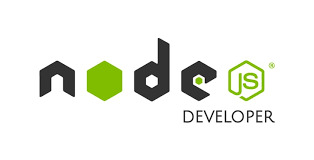
1. Unyielding demand
The demand for Node.js has been continuously rising. Node.js overtakes Java ( the most popular programming language so far)
2. More number of jobs in Node.js development
Less development time, the requirement of less number of servers, and unparalleled scalability offered by Node.js are the major reasons why companies are adopting it. Companies like LinkedIn are using it because it has significantly reduced their development time, while for Netflix it improved the application’s load time by 70%. Other prominent names in the tech industry that use Node.js include Medium, The New York Times, PayPal, and so on. Gradually, start-ups are catching up on this trend too, incorporating Node.js as part of their technology stack.

3. JavaScript is used extensively
The best part about Node.js is it uses JavaScript. JavaScript is the simplest and the most popular way to develop apps in the browser. You can do it with other programming languages, but it isn’t easy.
4. Become a Full Stack Developer in the shortest time possible
To become a Full Stack Developer, one requires to be familiar with the front-end and back-end. Earlier, to do so, one needs to know a server-side programming language, in addition to JavaScript. However, with Node.js, JavaScript can be used as a server-side programming language. Along with other frameworks like Express.js, Angular, and more, you can start working as a Full Stack Developer.

5. Lucrative salary packages
The salary for Node.js developers is comparatively better than other technologies. Developers starting their career in Node.js development can start anywhere between 5–10 LPA. This entirely depends on a developer’s proficiency in skills.
Conclusion
Overall, with increasing demand for Node.js, Node.js development is a promising career opportunity for developers looking to start their career in web development and experienced developers looking to fast-forward their growth.
Viitorcloud is one of the leading IT solutions companies in Ahmedabad. The company serves high-tech IT language developers like Node js developers, blockchain developers, IoT developers, python developers, Augmented Reality developers, Python developers, and many more. If you want to hire any developer, Viitorcloud is the right solution for you.
0 notes
Text
Backlinks
https://www.nerdclump.com/how-to-reverse-image-search/ https://www.nerdclump.com/how-to-unzip-a-password-protected-zip-file-on-mac/ https://www.nerdclump.com/how-to-remove-password-from-pdf-on-mac/ https://www.nerdclump.com/trust-wallet-review/ https://www.nerdclump.com/how-to-buy-crypto-on-trust-wallet/ https://www.nerdclump.com/how-to-buy-us-stocks-from-india/ https://www.nerdclump.com/why-macos-have-better-security-features/ https://www.nerdclump.com/best-graphics-cards-for-gaming/ https://www.nerdclump.com/are-iphones-more-secure-than-android-phones/ https://www.nerdclump.com/9-amazing-facts-about-iphones/ https://www.nerdclump.com/best-10-javascript-libraries/ https://www.nerdclump.com/best-websites-where-a-kid-can-learn-coding-for-kids-free/ https://www.nerdclump.com/how-to-download-handlebars-in-visual-studio-code/ https://www.nerdclump.com/how-to-update-java-on-mac/ https://www.nerdclump.com/how-to-make-if-statement-in-python/ https://www.nerdclump.com/how-to-download-node-js-in-mac/ https://www.nerdclump.com/how-to-make-your-own-minecraft-server-for-free/ https://www.nerdclump.com/twitter-blue-subscription-explained/ https://www.nerdclump.com/8-myths-about-privacy-on-the-internet/ https://www.nerdclump.com/webhooks-vs-api/ https://www.nerdclump.com/how-to-choose-the-right-monitor/ https://www.nerdclump.com/amp-explained/ https://www.nerdclump.com/how-to-update-ps5-controller/ https://www.nerdclump.com/cryptocurrency-as-a-legal-tender/ https://www.nerdclump.com/best-mic-for-podcast/ https://www.nerdclump.com/what-is-solar-roof/ https://www.nerdclump.com/7-apps-that-every-student-should-use/ https://www.nerdclump.com/ipad-pro-2021-m1-chip/ https://www.nerdclump.com/wix-website-builder/ https://www.nerdclump.com/best-cryptocurrencies-to-invest-in-2021/ https://www.nerdclump.com/apple-airtags-explained/ https://www.nerdclump.com/apple-imac-2021-explained/ https://www.nerdclump.com/profitable-cryptocurrencies-to-mine/ https://www.nerdclump.com/ways-you-can-increase-your-credit-score/ https://www.nerdclump.com/should-you-consider-learning-javascript/ https://www.nerdclump.com/tile-pro-review/ https://www.nerdclump.com/what-is-qr-code-and-types-of-qr-codes/ https://www.nerdclump.com/ipad-pro-2020-review/ https://www.nerdclump.com/top-30-cryptocurrency-with-highest-market-cap/ https://www.nerdclump.com/best-miner-for-bitcoin-and-ethereum/
0 notes
Text
Is PHP Dead Or Is It Still Relevant?

Since the last decade, there have been countless debates on whether PHP is a dead language or not. In the past five years, most of the developers and professionals have declared it as dead. The disturbing thing about the newbies that have been recently introduced to the web development field is that they found these two perspectives about PHP very confusing.
On one hand, we get to hear that PHP is not that supportive according to the latest demands in the market. On the other hand, when we see the stats, we find that almost 79% of websites on the world wide web are based on PHP or somehow connected to it. Then why there is such confusion about these two perspectives about this language? In this post, we’ll discover the exact reasons that will solve this big question today.
PHP in Web Development
The role of PHP in web development is quite significant and it helps to develop cloud based applications. It is a server side scripting language that provides a gateway to implement business logic, Database operations and entertain clients request on the server. Here, client is the web browser that makes a request to perform a specific function and gets the result without knowing the technicality of the backed procedure. There have been thousands of management systems running on PHP today.
PHP links with databases like MySQL or Oracle to fetch the data for the users. Every website based on PHP must contain a database that stores all the information of the users, so that it can be processed to fulfill the user’s requirement. PHP has many shapes and forms. If we make it as MVC driven, it becomes Laravel. And, if we shape it into CMS, it becomes the most popular CMS framework the WordPress.
How is PHP Losing its Worth?
Despite being one the most widely used platforms for web development, PHP is losing its worth. The web development sector has made a lot of improvement in the last decade. Platforms like Python, React native, Golang and Node js have changed the way of development by introducing multiple innovative features such as non-blocking code execution, lesser Browser to hardware communication time and better usage of Hardware capabilities to foster Backend processing. Meanwhile, the client’s demand has increased by the time due to the competition and needs of the users such as high speed web pages, Progressive web applications and cross platform mobile apps. Hence, these are the key reasons for losing the worth of PHP as a programming language:
PHP doesn’t support the latest web architecture
Due to the increasing use of mobile apps, the web developers are focusing more than ever on mobile friendly websites and that what a user needs nowadays. For that purpose, the new technology is focusing and made an exponential shift on server-less architecture that makes web apps performance faster and efficient. Sadly, PHP doesn’t support server-less web apps because it must need the Apache server for analyzing all the data. Meanwhile, by using latest tech stack, applications are being built to provide more concurrency, rapid response and optimum use of bandwidth, which are not the key points that were kept in mind while devising PHP.
The scalability of PHP is quite low
Although there are such vendors who have employed their own PHP frameworks to increase the scalability. Facebook is one of the biggest examples and wordpress too, through which you can even develop an ecommerce website by just doing drag and drop.
According to the latest digital requirement, PHP is not eligible to fulfill the requirement of the client and most importantly the need of the market. It means that you can't develop a large scale web app that can perform various functions with huge amounts of I/O operations and user management.
Limited option for Generating an API
API has an important role to create the pathway for the communication throughout your web application. PHP lacks native essence to build APIs unlike Node.js or even Django. Developer has to go as old school way to implement JSON driven APIs. Although PHP allows you the accessibility for creating an API by using JSON. If we compare such API with the modern standard then there’s a huge difference.
Lack of libraries for modern functions
The libraries of PHP are limited if we compare it to the latest programming languages. It doesn't only question its functionality but also its working efficiency. If a client demands a function that is not available in the PHP library, then 9/10 times you have to reinvent the wheel unlike in using other backend languages.
Why is PHP Still the Most Widely Used Language?
Despite all the drawbacks of PHP, there is no doubt that it is still the most widely used programming language in the world. The reason is quite simple that it has been serving for a long period in the web development industry and it is easy to learn. That’s why most of the developers choose it despite all the web based security risks.
When you use something for a long time it is difficult to get rid of it in an instance. So, PHP is a popular programming language and still it serves the requirements of most of the clients. So, based on its drawbacks we can’t conclude that PHP is dead or there is no use. There is a possibility that its influence might decrease by the time but it isn’t going anywhere in the near future. At least not within the next decade. So it is safe to say that PHP is still relevant even in modern times.
Connect to Status200
Status200 is a reputable software firm that provides web and mobile development services by using various technologies. It will provide you a complete package to digitalize your business over all the mediums. It provides quality solutions through proper project scope management. So, connect to Status200 today to get quality development services.
0 notes
Text
Top 7 Benefits of Hiring Dedicated Web Developers?

Enterprises across the globe are increasingly making the most of digitization. No wonder they need to leverage mobile apps and intricately designed aesthetically appealing websites & web applications.
A changing trend indicates that businesses prefer to outsource their mobile app and website development needs over hiring an in-house team of developers or managing it all by themselves. And why so?
Well, that?s what this post is about. If you are reading this post, the chances are that you too are looking to hire dedicated software developers. If yes, you must pat your back for this decision as there are myriads of benefits of hiring developers on a dedicated basis.
Let?s dive right in and take a look at those benefits.
Benefit #1- Access to skilled developer
Choosing to hire dedicated developers offers access to a team of highly skilled developers and designers. Whether you are looking to hire Dot Net Nuke, Python, Laravel, or Node JS developers, approaching a software development company to hire developers on a dedicated basis makes more sense rather than hiring freelancers.
That?s because freelancers are mostly niche-oriented and secondly they do not have as many resources as a software development company does.
Benefit #2- It is highly economical
More often than not, hiring a team of in-house developers turns out to be costlier than outsourcing your project, and needless to say it consumes your energy and a considerable amount of time to manage things when the project gets started.
Hiring a reputable software development company for web application or mobile development saves you a lot of time and money as you not only get access to a team of developers and designers but also have a dedicated project manager. You are kept updated about every vital detail of project development.
Benefit #3- Timely project completion
Next up! Web or mobile application development faces numerous roadblocks and when you do not have seasoned or professional developers, these roadblocks can cost you quite dearly.
Enterprises prefer hiring developers on a dedicated basis as these professionals dedicatedly work on their projects. This results in better productivity and outcomes. Project management becomes a cinch and more effective than it would be with an in-house team or freelancers.
Your project manager will provide you with daily and weekly reports and you can also interact with the developer for efficient project management.
Benefit #4- Client-centric solutions
Every project is unique and professional developers hired on a dedicated basis know the art of offering customized solutions. One size doesn?t fit all and this is where freelancers often go wrong. The whole strategy is created keeping client satisfaction in mind and as a stakeholder that?s what you expect when you invest your money and trust.
Benefit #5- Scalable solutions
Being a far-sighted entrepreneur you want to be future-ready. Hiring web developers and designers on a dedicated basis ensures that your business is powered with scalable solutions.
Scalability allows you to expand your wings as your needs change in the future. The IT landscape is quite dynamic and hence you need the assistance of pro developers who know what works and what doesn?t.
Benefit #6- Prompt response and technical assistance
The need of scaling up or down according to the current situation may arise at any time and when it is about handling a mission-critical situation, you need a prompt response from the support team.
Reputed software development companies have an in-house team of technical support professionals that is at your disposal 24?7 and if you need their help, they are just a call or click away.
The support team ensures that there is almost zero downtime so that your business doesn't take a hit during crucial business hours. Business continuity tops the priority list of all stakeholders and you are not an exception either.
Benefit #7- Quick turnaround time
Increase productivity and curb vulnerabilities in a time-efficient manner. Also, your website?s security cannot be compromised at any stage. When you hire a professional team of IT professionals, you can rest assured that your web application or mobile app is safe from unauthorized access and malicious attacks.
Hire Dedicated Developers for Your Ambitious Project
It can be safely concluded that having a team of dedicated developers by your side is a cost-effective and productive way that ensures 100 percent ROI.
If you are working on your next ambitious project and looking to hire dedicated developers, feel free to connect with Citta Solutions? software development experts and they would be more than happy to get you an obligation-free quote right away.
0 notes
Text
What is the Best Technology for Your Project - Python vs Nodejs?
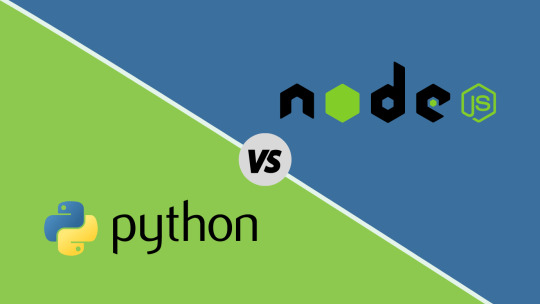
Python vs node js: Which is Right for You?
The high-level difference between Node.js and Python is that the former is mainly used for back-end services, while the latter is often used for front-end development.
In this blog post, we’ll explore common use cases for each language and help you select the right technology for your project.
1. Compatibility
NodeJS is compatible with all the major operating systems and browsers.
Python, on the other hand, is compatible with all major operating systems, but not all browsers.
NodeJS is compatible with all major browsers while Python can only be used in Internet Explorer 8+ & Chrome 17+.
2. Performance
NodeJS vs Python Performance – This is another important factor to consider when choosing the right technology for your project.
NodeJS: NodeJS is dynamically typed, Node.js is essentially a server-side JavaScript framework, which means that it is ideal for writing web applications and APIs. Node.js has been built from the ground up to be asynchronous, event-driven, and non-blocking.
This means that when writing code in Node.js, you have to think about how your application will behave when multiple users are using it at the same time (and more importantly synchronizing their requests). event-driven and single-threaded. So, it’s faster than Python for web development using frameworks like ExpressJS, etc.
NodeJS uses JavaScript on the server side which makes it easy to learn for frontend developers who are new to server-side programming.
Python: Python is slower than NodeJS but it’s a very stable and mature language with great community support. If you want to build a big data application or real-time web application then Python is one of the best options available today because it’s very fast and scalable compared to other programming languages like Ruby, Java, C#, etc.
3. Frameworks
You will find that Python is a library, whereas NodeJS is a framework. The difference between these two terms should be clear by now:
Python is an interpreted language and runs on any platform, whereas NodeJS is a runtime environment that runs JavaScript code in the browser or on servers.
NodeJS has some built-in modules for HTTP requests, but you can always install more modules from npm (Node Package Manager) if needed.
4. Scripting and Web Development
While Python may not be as good at this due to its current limitations in terms of performance on multiple CPUs/cores; however, Python can still handle many concurrent connections without much effort on your part if you use Celery or RabbitMQ.
5. Learning Curve
The learning curve is an important factor to consider when deciding which framework to use. Both Node and Python are general-purpose programming languages, so you can use them for a variety of different applications.
When it comes to Node vs Python Backend, Node is a server-side framework that runs JavaScript on the back end, whereas Python is simply a language that can be used for both frontend and backend development.
Why is NodeJS better than Python? Since NodeJS uses JavaScript as its core programming language (the same as HTML), it is easier to learn than Python.
If you are comparing NodeJS vs Python for web development, then NodeJS will likely be more appealing because there aren’t many things that come with it out of the box like some other frameworks do (like Django).
6. Memory Management, Concurrency, and Database Access.
Memory management: NodeJS uses a V8 JS engine that is faster than Python’s CPython. NodeJS also has better memory management than Python.
Concurrency: NodeJS is designed to support a large number of concurrent connections, making it useful in real-time applications such as chat servers and multiplayer games.
Because of its asynchronous nature, you are not required to use threads or callbacks which makes it easy to code and test your code.
Database access: If you need any database access in your project, then NodeJS is the right choice for this purpose because it comes with an inbuilt database library called “Mongoose” that allows you to interact with MongoDB databases easily without writing much code at all!
7. Supported Platforms and Libraries
Another important factor is the supported platforms and libraries. NodeJS is supported on a wide range of platforms, including Windows, macOS, Linux, and Unix.
Python has similar support but also includes Android and iOS (this is not surprising since Python was initially developed to run on mobile devices).
NodeJS has a much larger community than Python which means there is more opportunity to find help with issues you may encounter.
8. Datasets and Libraries Support Python and Nodejs
Python has a much larger community and ecosystem. This means that there are numerous libraries for various use cases, as well as automation tools for DevOps. Python is also the language of choice for data analysis and machine learning
NodeJs is better at server-side programming, while Python can be used both on the front end and back end
Summing Up…
At the end of the day, both NodeJs and Python are great languages with a lot of advantages. It all comes down to what kind of project you’re working on and whether one is better suited than another for your needs.
The NodeJs vs Python debate has been raging for years, with no sign of slowing down anytime soon. If you’re looking to start a new project or need some help choosing between the two languages, this article will give you some pointers on how they stack up against each other in terms of performance and popularity. And if you need any assistance with building the applications then contact the Digital Info Bytes team to discuss your requirements in detail.
This article is initially published on Digital Info Bytes!
#Node vs Python Backend#Nodejs or Python#Nodejs vs Python#Nodejs vs Python for Web Development#Nodejs vs Python Performance#Why Node JS Is Better Than Python
0 notes
Link
Frequently asked questions of programming.
• Should I learn Python or JavaScript? • Data Science vs Web Development vs App Development, which one should I choose? • Why should I learn Web Development when there are popular Web Developing tools like Wix & WordPress? • All these points made me confused 😕 about what should I do?
So before starting with the questions Here's something about who I am and What makes me qualified to answer such questions? I'm a gradiot (an idiot who did his graduation and who has wasted money and time getting zero skills from college while there's an actual opportunity to learn everything online for free). Yes, I am a CS graduate. I have a great desire to make things, you might know the feeling of IT'S ALIVE if you have developed anything. During my college years I came across multiple technologies from Arduino to Raspberry pi, from PHP to JavaScript, Python, flutter you name it. I tried to learn and understand various technologies not due to college curriculum, but due to my desire to learn more and google 😎. Throughout my journey I encountered many questions and here are some of the questions I think will help you guys. Hope You'll like it.
Should I learn Python or JavaScript?
Before I start with why Python🐍 or JavaScript⚡. Let's talk about programming in general. Programming is a way of thinking and implementing the logic you create in a language that machines understand. Now there are styles or you can say structures of programming aka programming paradigms like Object-oriented programming (OOPs), Functional programming, procedural programming, etc. As a developer, you should at least know one of these paradigms. The more paradigms you know the broader choices you'll have for creating efficient and flexible code.

Back to the topic, Python and JavaScript both support OOPs and functional programming along with other paradigms. JavaScript is considered as the king of web programming that is used to create highly functional and dynamic websites. It has a vast ecosystem of libraries and frameworks to choose from like ReactJS, Angular, and Vue for front-end and NodeJS for the backend. You can also create native Apps for phones using React Native in JavaScript. So, with JavaScript, you can develop full-fledged websites as well as mobile applications. Whereas, Python is Best-suited programming language for Machine learning and data science. It has multiple Libraries like Keras, TensorFlow, Scikit-learn, etc. Along with that, Python is easy to use and has large community support. You can also create websites in python using frameworks like Django and Flask. You can also create apps in python as well using Tkinter, kiwi, etc. Both languages have powerful rounding development.
TL;DR Here is my perspective on this topic. As a developer, everyone must know basic web development since Machine learning and Data Science is a service-based skill While Web and App Development is a product-based skill. Hence, Data Science and Machine learning people are called engineers and not developers. Notice the very subtle difference between an engineer and a developer. Also, you know Mark Zuckerberg, Elon Musk, well they started with web dev and created their products. Ask yourself what you want, define your goals, and then choose wisely and always bet on JavaScript.
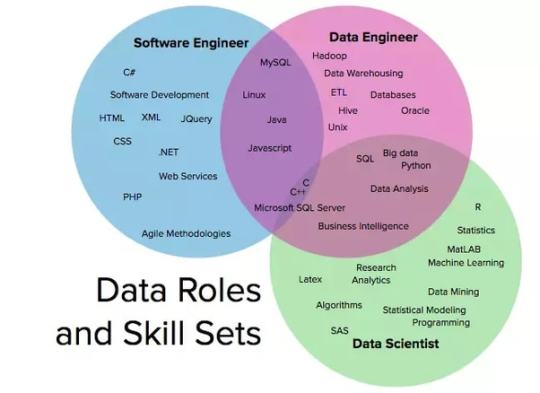
Data Science vs Web Development vs App Development Which one should I choose?
If you are reading this, you might be knowing very well the pay of a Data Science and ML engineers as compared to a Web Developer or an App Developer. All this huge burst about AI is the future and might very well draw you towards thinking that even I should learn Data Science for a huge package and a job opportunity. Here's the ugly truth, it's hard to get a job in Data Science since companies will prefer a person having the Domain knowledge and usually majoring in Mathematics and statistics, you should at least have Masters or Ph.D. for getting a job in this field. For Example- A fintech company will choose a CFA or Finance major rather than a CS engineer and teach them Data Science since python is easy and it's the efficiency that counts. So, the person with finance knowledge is well suited for the job. However, As I said It's hard to get a job, not impossible. Some CS grads have got into data science and are earning handful. All you need to learn is python and some libraries and mathematics. Now, As I said before, data science is a service-based skill you are not technically a developer you're an engineer who is figuring out solutions for a given problem. On the other hand, being a web or app developer means developing products. You can create applications and websites and release them to earn using ad revenue, selling them, or even creating and maintain them for companies that way you don't have to rely on companies to give your services. I suggest you to first, learn web development and then Data Science while earning through your web dev skills. That way you will have a decent skill set, portfolio, and a budget to start experimenting into the world of machine learning where processing power is everything.
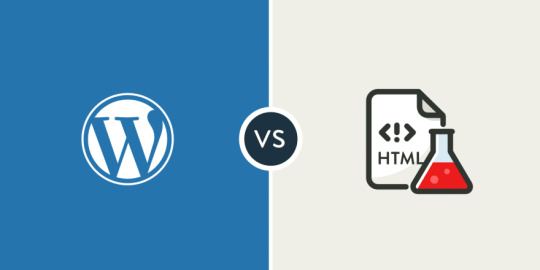
Why should I learn Web Development when there is a popular Web Developing tool like Wix & WordPress?
WordPress and Wix are popular content management systems. They are best for creating small websites and blogs. Yes, they made it easy for anyone to create websites but that doesn't mean web developers' jobs are gone. You can't create Amazon, Netflix, Twitter, and large fully functional websites using them. So, if you are trying to be a low-level web developer, you can pretty much say goodbye to developing websites. You can google top trending tech skills in demand and you will find AngularJS, ReactJS, NodeJS developers in demand. Not only websites but you can also create native applications for android and iOS using React-native and games using ThreeJS a JavaScript library. Possibilities are endless, all you have to do is START. I'll suggest you start with MERN stack just my personal opinion but you can research and pick whichever stack you like.
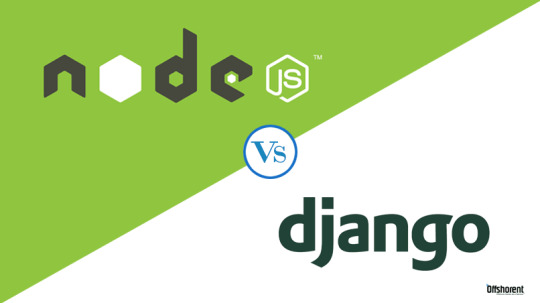
Is NodeJS better than Django?
Before comparing let's talk about what is NodeJS and Django. Node JS is a JavaScript runtime taken out of the client-side browser environment which uses OS binding for I/O, and Django is a Python framework. So comparing both is like comparing apples with oranges. Though let's have these points clear. When It comes to performance, Yes. NodeJS is faster than Django or in general python since it's written in C++ and is a JS runtime. You ask why? because JavaScript is faster than python because it works on an asynchronous non-blocking object model. When It comes to scalability, No. Django or python, in general, is highly scalable as the caching of applications is quite easy. Django is a high-level Python Web framework that encourages rapid development and clean, pragmatic design. With the introduction of npm which stands for the Node Package Management system, the open-source community has been boomed towards NodeJS since managing packages and dependencies has never been that easy. Also, npm is far better than pip when it comes to package management, you can research about it. Here are some of the big fishes and the backend tech they preferred for their development. Uber, Twitter, eBay, Netflix, Duckduckgo, PayPal, LinkedIn, Trello, Mozilla, GoDaddy are some big names using Node JS as their backend technology. Pinterest, Instagram, Eventbrite, Sentry, Zapier, Dropbox, Spotify, YouTube are also some big names using Django as their backend technology. Notice the trend here, Uber, Twitter, and Netflix are some of the applications that priorities performance whereas Pinterest, Instagram, YouTube requires a lot of space and thus scalability is their priority. So, the choice is upon you what you want scalability or performance.
All these points made me confused 😕 about what should I do?
First, ask yourself what do you enjoy doing. Do you like to create games, apps, websites? What intrigues you? What sparks your curiosity? I have listed some of the questions depending upon the choices you make.
• GAME Development – If you want to get into the game development industry, you will have to learn C# or C++ for hardcore game development. You can create web games using ThreeJS or any other library but you won't be exactly a game developer.
• App Development – You can create an application using JAVA for android or Swift for iOS. Further, you can use React-native or Flutter for creating apps that would run on both android and iOS. If you want web apps, you can use Ionic as well.
• Web Development – There are many stacks (a set of technologies that suits well with each other) you could choose to learn like MEAN stack, MERN stack, LAMP stack, etc. You can create a website from WordPress or Wix as well. Develop an interactive portfolio for yourself with the stack you find interesting.
• Data Science, ML, AI – Start with python and take courses on data science, mathematics, machine learning, from popular websites like Udemy or LinkedIn. Start competing on Kaggle and maintain your Kaggle profile. Second, do yourself a favor and start learning algorithms and data structures in the language that fits your answer to the above question. Third, Start applying for internships with some projects and try to make an exemplary portfolio. Maintain your GitHub, LeetCode or HackerRank or any other profiles which you can include on your resume.
I hope this might help you; I tried my best to answer some of the questions that I've faced throughout my journey as a gradiot. If you feel that I'm missing something or something is wrong please feel free to correct me in the comment section. Thank you for your valuable time.
0 notes
Text
Top five new web development trends and technology in 2020

Web Development Company in India: Web development trends and technologies are continually changing for the betterment for the web developers. We live in an internet world where everything changes every second. So, you all need to cop up with the speed of evolving. Because just like other fields that are important for you to keep up with the latest trends and technology. We are here the web development company in India try to cop up with the latest trend and technologies. That is why, for your information, I have made the most powerful top five web development trends and technologies in 2020.
1) Single Page Applications
A single page application is a web application or an advanced website. A website is crucial for every business. Top web development companies in India helps you in making stunning mobile-friendly websites. A single page application is a web application in which the server rewrites and loads the current page for the user rather than load the whole page for the user. A single page application improves load time performance. The Web Development Company in Gurgaon has experienced developers that can make you the best websites for your business. A single page application is indeed the great trends for the users that are surfing from one website to another.

2) Chat bots
Chat bots are artificial software. Chat bots will become popular in 2020, and people use it widely. Alexa and Siri have already become popular, and Virtual assistants have not only helped small businesses but also big enterprises. A chat bot is an application that mimics your spoken language to have a conversation on the other side of a phone. Netleaf Software, the best web development company in Gurgaon, provides solutions for chat bots.
3) Programming language
There are tons of programming languages available for you to choose from your website. That is not necessary for you to learn all languages, but you should learn the few that are popular to follow. As you know, AI and machine languages are becoming popular and trendy. So, learn the most famous machine language, Python. For front-end, undoubtedly JavaScript will still hold the first place. But JavaScript is evolving too, so, developers need to learn the basics and the latest versions of JavaScript like NPM or Yarn. NPM is a Node package manager that makes it easy for developers to rewrite or share with others. The best website development company in Gurgaon uses the latest languages to cope up with the competition with ease.
4) Frameworks
There are a bunch of updates in frameworks like in JavaScript frameworks, CSS libraries frameworks, web content, etc. Learn the latest JavaScript framework like Node JS, React, or vue. There are not new but right now it is in use. There are updated versions of CSS frameworks to help in designing the website in a new and exciting way. The website development company in Gurgaon uses the latest frameworks for making websites.

5) Voice search
Voice search is in trends and develops by Google. Voice search makes Google search easy. It is mainly to search on the web through voices. Voice searches can affect SEO work. So, developers should add the richest snippets for the voice search. This trend is for the laziest typist who does not like to write and prefer speaking in everything like typing a message or writing a comment on Face book, etc. The web development company in India has been trying to follow the latest trends and technology, and keep on tracking the updates.
Conclusion
I hope this blog will help you understand and shed some light on the latest trends and technology in 2020. If you have any recommendations to add, then please leave a comment. Top web development companies in India is here to help you with any doubt of yours.
#web development services#top web development companies in India#web development company in India#website development company in Gurgaon
0 notes
Photo

The most popular JavaScript links of 2019
#469 — January 3, 2020
Read on the Web
JavaScript Weekly


The holiday season is rapidly coming to a close and we're looking forward to not only a new year but the entirety of the Roaring Twenties. Rest assured, the JavaScript world is not going to look the same when 2030 turns up so watch this space! 😄
We'll be back as usual next week, but this week we're taking a look back at 2019 and the most popular things you clicked on. If you didn't read every issue in 2019 (we wouldn't expect you to!) you'll hopefully find a few things worth revisiting here.
Thanks for supporting us — we look forward to keeping you up-to-date in the years to come.
— Peter Cooper and the Cooperpress team
📈 Our most popular links of 2019:
1. The TypeScript Tax: A Cost vs Benefit Analysis — As much as we love JavaScript, this was really a strong year for TypeScript, with it seeming to become the de facto way to bring strong typing to JavaScript. Back in January, Eric Elliott asked "is it worth it?" and presented some critical, data-driven analysis to establish its viability. It was your most clicked link of 2019.
Eric Elliott
2. New ES2018 Features Every JavaScript Developer Should Know — We're now looking forward to ES2020 and we've had ES2019 in 2019 too, but this post remains packed with interesting examples of spread properties within object literals, asynchronous iterators and asynchronous iterables, Promise.prototype.finally, and other features that are still not exactly common to see in the wild.
Faraz Kelhini
The Complete ⚛️ React Learning Path — Take your React to the next level to find out what it is fully capable of with this comprehensive learning path.
Frontend Masters sponsor
3. 43 JavaScript Questions, With Their Answers Explained — Whether for fun or a job interview, this remains an interesting set of JavaScript-related questions, complete with explanations of the answers.
Lydia Hallie
4. I Don't Hate Arrow Functions (But..) — Arrow functions (=>), as introduced in ES6, have generally been a much welcomed addition to JavaScript but Kyle Simpson reminded us they’re not suitable in every scenario and created an ESLint plugin to help you keep a handle on their use.
Kyle Simpson
5. Responsible JavaScript: A Three Part Series — We originally only linked to part one of this great series where Jeremy Wagner plotted a course to avoid the unnecessary bloat and inaccessible patterns of modern JavaScript trends.. but now you can enjoy part 2 and part 3 too, where he went into more technical depth on bundling and handling third-party scripts.
Jeremy Wagner
6. What’s New in JavaScript — At this year’s Google I/O ’19, Mathias Bynens and Sathya Gunasekaran of the V8 team gave a fantastic 30 minute ‘state of the union’ talk on the state of JavaScript as a language and what new features are being baked in.
Google I/O video
💻 Jobs
JavaScript Developer at X-Team (Remote) — Work with the world's leading brands, from anywhere. Travel the world while being part of the most energizing community of developers.
X-Team
Senior Software Engineer, Frontend — Use the latest tech to mold an innovative, empathy-centric experience for creators to order fast, high-quality parts (forging space robots to animatronics).
Fictiv
Find a Job Through Vettery — Vettery is completely free for job seekers. Make a profile, name your salary, and connect with hiring managers from top employers.
Vettery
📘 The most popular articles & tutorials of 2019

The Cost of JavaScript in 2019 — Addy Osmani presented a 2019 update to his Cost of JavaScript in 2018 article in both video and article forms. If you still want to get a feel for where the true bottlenecks are with JavaScript, this is a must read.
Addy Osmani
Should We Rebrand 'JavaScript'? — This thoughpiece provoked quite a bit of discussion in the community over the problems (or not) with ‘JavaScript’ as a name. I think we'll see more on this front in 2020.
Kieran Potts
First Online Mentored Software Bootcamp w/ Job Guarantee — Get a job or your money back with Springboard’s online bootcamp. Benefit from 1:1 mentorship, our exclusive curriculum, and top career coaching.
Springboard (Software Engineering Career Track) sponsor
When Should You Be Using Web Workers? — Web Workers provide a way to run JavaScript in background threads in the browser and you’d think using them as much as possible would be a good thing.. right? Current frameworks make this tough, says Surma, who shows us why we should be working to change this ASAP.
Surma
Practical Ways to Write Better JavaScript — You’re not necessarily going to agree with all of them (e.g. “Use TypeScript”!) but this is a reasonably solid batch of points to think about overall.
Ryland Goldstein
JavaScript Symbols: But Why? — Not played with symbols (a new data type introduced with ES6) yet? This is a gentle way to get up to speed with not only what they are but why you might use them.
Thomas Hunter II
Make 2020 the Year to Master MongoDB. Try Studio 3T Today — Generate driver code for JavaScript, Python, Ruby and more? Build queries fast with our drag & drop editor? Of course.
Studio 3T sponsor
Using Native JavaScript Modules in Production Today — “now, thanks to some recent advances in bundler technology, it’s possible to deploy your production code as ES2015 modules—with both static and dynamic imports—and get better performance than all non-module options currently available.”
Philip Walton
7 Tricks with Resting and Spreading JavaScript Objects — Using modern JS features to merge objects, organize properties, and more.
Joel Thoms
📺 The most popular videos of 2019
▶ Why I Was Wrong About TypeScript — Smells like an opinion-driven talk, but actually covers the history behind compile-to-JS languages, how we got to a point where interest in TypeScript is growing strongly, and why it’s worth taking seriously.
TJ VanToll
▶ Why 0.1 + 0.2 === 0.30000000000000004: Implementing IEEE 754 in JS — Head to your node CLI right now and type in 0.1 + 0.2. If the answer confuses you, this is the video for you. And even if you know why, working with the building blocks behind floating point representations is just cool anyway.
Low Level JavaScript
Video Developer Report - Top Trends in Video Technology 2019
Bitmovin sponsor
▶ Keep Betting on JavaScript — Kyle Simpson presents a history lesson of JavaScript, looks at how a variety of features were (or weren’t) introduced, and compels us to think about the future of the Web and JavaScript as we contribute and ‘place bets’ on technologies.
Kyle Simpson

▶ A Look at Deno: A New(ish!) JavaScript Runtime — Ryan originally created Node about ten years ago but over the past couple of years he’s been working on Deno, a non-Node compatible, TypeScript-focused runtime with some interesting features. (Note: Poor audio until a few minutes in.) I suspect we'll hear a lot more about this in 2020.
Ryan Dahl
🔧 The most popular code & tool releases of 2019
Svelte 3 Released: Rethinking Reactivity — Svelte is one of the most interesting UI frameworks out there as it’s not scared of taking a unique approach. Rather than running in the browser, Svelte runs at build time, compiling your app into more efficient runtime JavaScript. Svelte 3 took some major steps forward, particularly in helping you write less code.
Rich Harris
Mithril.js 2: A JavaScript Framework for Building Brilliant Applications — Mithril is a really neat alternative to things like Vue, React or Angular. It’s very compact and fast (so ideal for mobile), runs a bit closer to vanilla JS than the alternatives, and is great for tying together vanilla JS libraries rather than needing its own alternatives.
Mithril
RunJS: A JavaScript 'Scratchpad' Tool for the Desktop — Write and run JavaScript instantly. Useful for learning, experimenting, or perhaps even creating screencasts, tweets, or similar educational content. Originally macOS only but now supports Windows and Linux too.
Luke Haas
Pixi.js 5: Create Beautiful 2D Web Experiences — Boasts the ‘fastest, most flexible 2D WebGL renderer’ to let you take advantage of hardware acceleration without getting involved in WebGL or 3D concerns. Check out demos for what the code looks like and what you’d use it for. There’s also a Pixi Playground for quickly crafting your own experiments.
PixiJS
Babylon.js 4.0: The (Very) Powerful WebGL Graphics Engine — Such a significant release that they released a 2 minute video trailer for it! Want to play? Enjoy this editable live demo.
Microsoft
Postwoman: An API Request Builder and Tester — A free alternative to Postman, a popular app for debugging and testing HTTP APIs. Postwoman works in the browser and supports HTTP and WebSocket requests as well as GraphQL. Insomnia is a similar tool if you want to run something as a desktop app.
Liyas Thomas
FlexSearch.js: A Full Text Search Library — Claims to outperform all of the alternatives while supporting features like multi-word matching and phonetic transformations. Happy in both the browser and Node.js.
Nextapps GmbH
Just: A JavaScript Task Library from Microsoft — If you’re familiar with Ruby’s rake, it’s a bit like that. Define tasks in JavaScript, run them with just (which works fine without installation using npx) and you get a bunch of nice features like logging and task composition.
Microsoft
Node-RED 1.0 Released — Node RED is a flow-based, visual programming tool (aimed primarily at hardware automation) that’s built on top of Node.js. Despite only reaching 1.0 in 2019, it’s a mature project used in numerous real world IoT projects.
Nick O'Leary
by via JavaScript Weekly https://ift.tt/2QHifL3
0 notes
Text
How important is coding?
Coding is and has always been the most futuristic job. It will remain relevant until the end of technology because apparently without coding you cannot design a program or give a new shape to A.I (Artificial Intelligence).

Coding, also known as programming, basically implies writing codes for computer programming or building web pages and applications. HTML/CSS, PHP, Javascript, C+, and Dot Net are few of the examples of most adopted programming languages. Whatever we see inside a computer, on the internet, or machines with a graphical interface such as a smartphone is basically made from coding.
Coding as a Tech Job
8 out of 25 jobs posted are Tech Jobs. With the rising demand of developers, coding has become an essential skill in almost every resume.
The essence and importance of programming cannot be denied in today’s world where almost everything built by human runs on arrays of codes.
Large conglomerates such as Apple, Google, and Microsoft who house thousands of employees demand expert programmers. Although an exceptional case, a programmer made as much as $3million a year in salary and stock at Google. This makes coding the most sought after job in the world.
The most sought after Tech jobs in the world are as follows;
· Information Technology (IT) worker
· Data Analysts
· Artists and designers
· Engineers
· Scientists
According to the U.S. Bureau of Labor Statistics, in 2012, the average salary for an application software developer was $93,000, with only 10 percent of such developers making more than $139,000 in salary.
10x Engineer
10x Engineer implies that the computer engineer can code 10 times faster any average coder or he can do 10 times more than any coder. They are the highest-paid tech workers in the world. Although a popular concept, there are likely only 1% 10x Engineers in the world.
Along with the coding, testing the application, debugging, and designing (UI/X) are equally important job descriptions. However, the demand for a coder exceeds any other tech jobs.
Importance of Coding
Developing a program through coding involves a series of steps where a programmer will define a problem, plans a solution, code, test the code, and finally document the program. The importance of coding can be simplified through the following points.
Systems Knowledge
Coding helps a programmer to gain a full understanding of the how and why of computer systems, including system limitations. They can work around those limitations to fully maximize the use of the equipment and its accessories.
Creativity Platform
Coding has always been a platform to showcase creativity, especially for entertainment. With the help of coding, the game develops can create new video games, graphics, and animations to showcase new business ideas or to resolve a particular problem.
Interactive Education
Coding helps in interactive education by offering interactive web applications. Used on online learning platforms, these applications have allowed distance-learning programs to take off. Today, almost all major learning institutions have some form of online learning implementation, thanks to computer programming such as cloud computing.
Defining the Future
Every major futuristic accomplishment has been done by programming. Future-technology such as voice-recognition, artificial intelligence, and touch-simulation in devices keep evolving and getting better with the advent of new coding. The rise in online shopping gave way to eCommerce and easy online payment systems. A.I. in smartphone and websites can offer suggestions, advice, or solutions at ago.
Machine Language
Since computers work with numbers, programming allows a person to represent machine-language in a human-readable format. This reduces the chances of introducing errors and wasted time in debugging and correcting mistakes
Different Programming Languages
A programming language is known as a vocabulary with a set of grammatical rules instructing a computer or computing device to perform specific tasks.
Although the term programming language usually referred to high-level languages, such as BASIC, C, C++, COBOL, Java, FORTRAN, Ada, and Pascal, today it is used for almost every set of a programming languages such as PHP, Javascript, Python, Dot Net, and C+.
Some of the most implemented programming languages are as follows;
PHP

More than 80% of the internet is powered by PHP. Everything ranging from website, applications, to portals are designed in PHP. Since its inception, PHP developers have always been in high demand. Due to the availability of open-source content management systems, frameworks and a good compromise of speed, code quality, and development PHP are chosen as the developer’s tool for years.
Laravel remains one of the most adopted PHP frameworks that is used to develop dynamic web pages.
C++
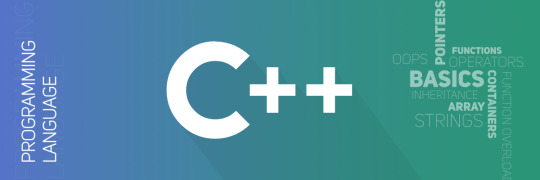
C++ is an all-purpose object-oriented programming (OOP) language. C and C+ were its predecessors. The main highlight of C++ is a collection of predefined classes, which are data types that can be instantiated multiple times
Dot Net
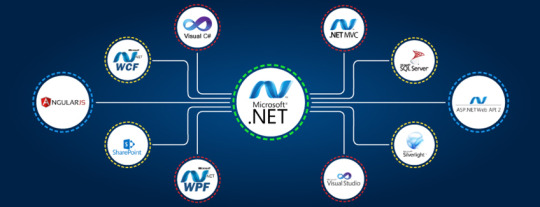
The advent of Dot Net improved development experience and relieved engineers from security operations, active memory management, and other low-level efforts that C/C++ developers had to bother with.
.NET is a language-independent framework that provides programming guidelines to develop a wide range of applications for web, mobile, and Windows-based applications. The .NET framework can work with several programming languages such as C#, VB.NET, C++, and F#.
Javascript
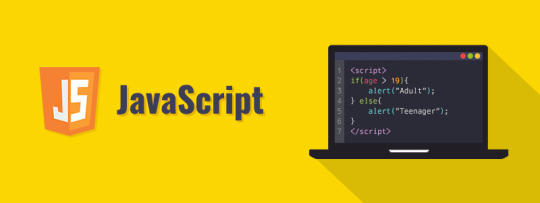
JavaScript (JS) is a lightweight, interpreted, or just-in-time compiled programming language with first-class functions. While it is most well-known as the scripting language for Web pages, many non-browser environments also use it, such as Node.js, Apache CouchDB and Adobe Acrobat.
AngularJS
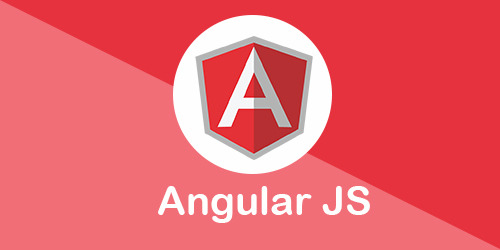
AngularJS was developed to tackle the growing needs of developers. It is a structural framework for dynamic web apps and uses HTML as the template language. It is a JavaScript-based open-source framework used for building a front-end web application.
NodeJS

Node JS relies on Javascript and uses an event-driven, non-blocking I/O model that makes it lightweight and efficient. It remains perfect for data-intensive real-time applications running across distributed devices.
ReactJS
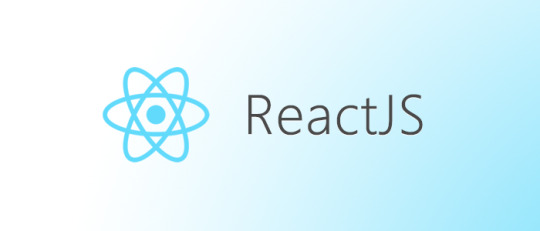
React JS is an open-source JavaScript library designed by Facebook. It is used for building user interfaces or front-end framework specifically for single-page applications. It is used for handling the view layer for web and mobile apps.
Most Demanded Programming Language
Here are the Top 7 programming languages with the most job postings on Indeed as of January 2019.
· Java – 65,986 jobs
· Python – 61,818 jobs
· Javascript – 38,018 jobs
· C++ – 36,798 jobs
· C# – 27,521 jobs
· PHP – 16,890 jobs
· PERL – 13, 727 jobs
How can I learn to code?

It is easy to learn coding if you can invest few hours of your day learning the basics of programming, such as language (PHP for dynamic web page, Swift or C for iOS mobile apps, and Java for Android apps), code implementation, toolset, framework, testing, and developing applications or web pages.
Online Courses

Online courses offer you a flexible schedule. You can learn the coding at the comfort of your home. Most online courses offer classes and conduct exams in return for a small fee.
The Odin Project is one of the sites offering an online course on programming for solo practitioners.
Subscription-model certification courses from Udacity or Treehouse offer an opportunity to ask a tutor.

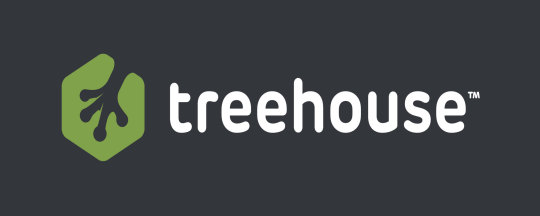
You can get free practical JavaScript course from Watch and Code, which revolves around a single project that you continually iterate.
Watching videos and tutorials, reading e-books, and practicing your own project can help you gain programming knowledge quicker than you can think.
The ability to code comes with greater benefits. You can find a high-paying job at almost any Tech company. With the rising demand for programmers, you are less likely to be returned from job interviews.
The important thing to keep in mind to keep yourself updated. With the changing face of technology comes bigger challenges such as keeping yourself updated, learning the additional language for larger outreach, and collaborating with like-minded personnel’s. The GitHub offers a large resource of knowledge, codes, and an opportunity to collaborate with programmers around the world.
Searchable Design llc
Searchable Design in an it company located in Des Monies, Urbandale. Searchable Design is an enthusiastic group of IT professionals in Des Moines working to provide endless web,mobile solutions in des moines for businesses and individuals alike. From a niche website to varieties of online business tool, we design, manage and upgrade everything according to your need and requirement.
#importanceofcoding#differenttypesofprogramminglanguage#searchabledesign#itsolutionindesmoines#itcompanyindesmoines#itcompanyinurbandale#onlinecourseforprogramminglanguage#mostdemandedprogramminglanguage#webdevelopmentindesmoines
0 notes